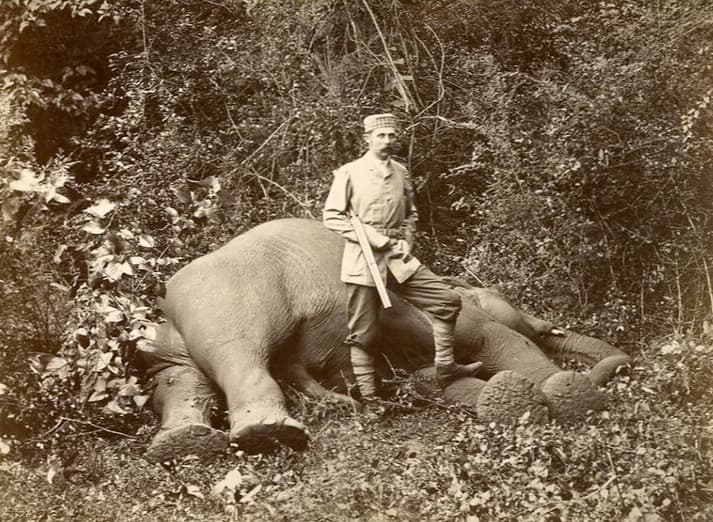On 20 March, I read a letter from the Wildlife and Nature Protection Society of Sri Lanka (Ceylon) (WNPS). The letter was shared on Twitter following the removal of the ‘Stop Ecocide’ mural at Viharamahadevi Park. The letter, addressed to the Mayor of Colombo, requested permission to conduct an awareness event to commemorate Environmental Day in solidarity with Global Climate Action. One of the things that struck me about the letter was the date of the Society’s establishment: 1894. As pointed out by other tweeps, the Society was over 126 years old! I was familiar with some of its work but was not aware of its long history.
The Report on the Administration of the Affairs of Ceylon, 1896 to 1903 reveals some fascinating insights. It appears that the WNPS has a long record of environmental advocacy, and substantial success in lobbying various governments to protect and promote wildlife and nature in Sri Lanka.
In present-day Sri Lanka, some of the greatest risks to the environment come from deforestation, often to build reservoirs, roads, and hotels. In British colonial Sri Lanka, hunting was an additional, major threat to the survival of wildlife. It was both a sport for aristocratic foreigners and a means of affirming ‘the power, legitimacy and scope of the colonizing project’.[1]

When the WNPS was established in 1894, it was originally known as the ‘Game Protection Society’. Shortly after its establishment, it pressured the colonial government to impose restrictions on the shooting of wildlife, ‘not only in the interest of science, to save from extinction the best specimens of our Island fauna, but also to preserve an important source of food supply’ for villages in the areas surrounding the forests.[2]
In the years prior to the establishment of the Game Protection Society, the government had already addressed certain limitations in the existing legislation on wildlife protection. For example, in 1891, the government enacted an Ordinance to prohibit the shooting or capture ‘of any elephant, buffalo or game without a licence, game being defined as including sambur, spotted deer, red deer, barking deer and peafowl’. Previously, legislation to protect wildlife in Sri Lanka was limited to only elephant and buffalo. In that context, sambur and deer were slaughtered by villagers for food, but also ‘at the instigation of traders in hides and horns’. Although the shooting of elephants without a license was banned, the capture and export of elephants continued under the British even during this period. The cruel method of capture known as the ‘kraal’ (originally introduced by the Portuguese but continued under the Dutch and British) continued until the post-Independence period in 1950.
In the same year this new Ordinance was enacted, the Executive Council of Ceylon (the highest governing council in the land) was vested with the power to levy an export duty on hides and horns of spotted deer and sambur (and if necessary, to ban such export altogether). Four years later, in 1895, the Game Protection Society successfully advocated for a ten-year ban on such exports. By 1903, the export of deer and sambur horns was totally banned.
F.C. Fisher, a former Assistant Government Agent of Tangalle led one of the Society’s most crucial early efforts. Fisher suggested that game sanctuaries should be ‘declared by demarcating and prohibiting entry into limited areas of forest.’ In 1900, a large area in Hambantota district consisting 96,000 acres — between the Kumbukkan and Menik rivers — was specially reserved and established as a wildlife sanctuary.[3] Within two years, the government reported a ‘remarkable’ increase of wildlife in this tract of land. The population of elephants, it appeared, had shown no signs of decrease in this time.
The Government had another responsibility alongside the preservation of the environment: ensuring a constant food supply for the people. To manage the need to protect the environment and to enable a constant food supply, powers were vested in the Government Agent of each Province to issue villagers a license to shoot game free of duty. This system was likely to have been imperfect. Yet, such historical experiences confirm that the protection of the environment and development goals are not mutually exclusive. They are one and the same and can be pursued together.
[1] Tariq Jazeel, “Nature”, nationhood and the poetics of meaning in Ruhuna (Yala) National Park, Sri Lanka’, Cultural Geographies 12 (2005), p.201.
[2] Administration of the Affairs of Ceylon, 1896 to 1903 (Colombo, 1903), p.123.
[3] Ibid., p.124.
Original Article:
https://shamara-wettimuny.medium.com/the-game-protection-society-est-1894-83101e0895
